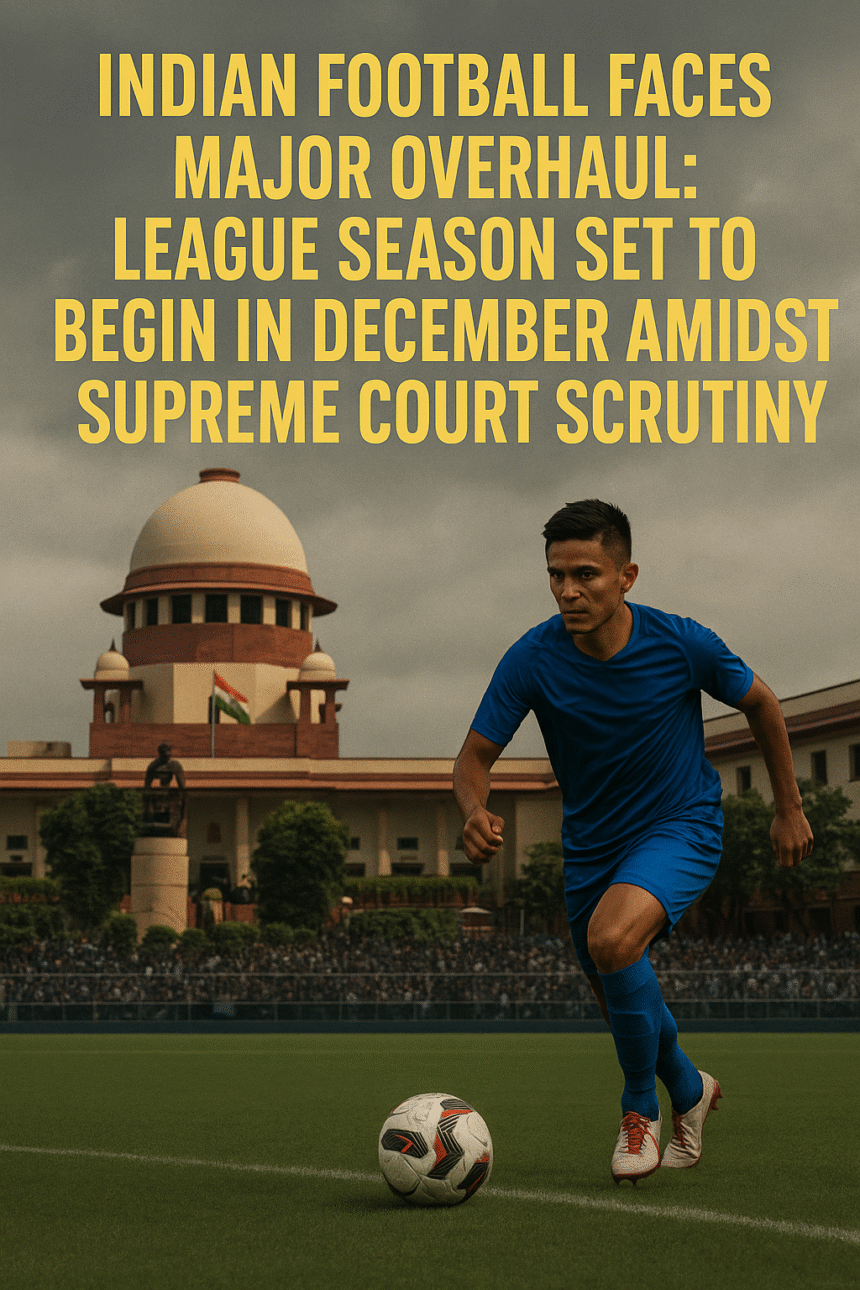analysisWe need to produce an HTML article with sections. Should not include
. Use
Background and Context
The move comes on the heels of a protracted legal battle sparked by FIFA’s warning that India could face suspension if the federation failed to present a compliant constitution by October 30. In 2023, the Supreme Court appointed former judge Justice L. Nageswara Rao to draft a new constitution, and AIFF submitted it to the court, but it remains under review. Meanwhile, the 15‑year marketing contract between AIFF and FSDL, which is set to expire on December 8, 2025, has become a focal point. With the sport gaining global attention—particularly after the national team’s historic 2024 World Cup qualifiers—a transparent commercial model is deemed essential to attract sponsorship, improve infrastructure, and enhance grass‑roots development.
The emerging framework is also a response to criticism that the existing ISL structure has not fully translated financial investment into sustainable football pathways. By embedding an open tender process for future marketing rights, the AIFF aims to position Indian football league alongside top international competitions where governance, revenue distribution, and brand visibility adhere to global best practices.
Key Developments
In a joint submission, AIFF and FSDL outlined a two‑phase approach. First, the 2025 season will open with the Super Cup or an alternative domestic competition to maintain fan engagement, with the full league resuming in December. This staggered start is intended to mitigate disruptions associated with the pending court decision and the imminent conclusion of the FSDL licensing agreement.
Key points include:
- Open, transparent tender: FSDL’s 15‑year contract ends December 2025, but AIFF has agreed to waive the Right of First Negotiation and Right of Match, allowing international bidders to compete openly.
- Payment terms: The final tranche of RS 12.5 crore, previously earmarked for the 2025 season, will be advanced to ensure teams secure operational and player budgets before the new calendar takes effect.
- Timeline: AIFF pledges to finalize the marketing partner by October 15, giving potential bidders at least six weeks to prepare bids in line with global ISL licensing criteria.
- Supreme Court reflection: The decision must be “reflected” by the court before it issues a judgment, following which the FIFA‑approved constitution will be ratified.
“This collaborative framework represents a significant step forward in the evolution of Indian football,” the joint statement reads. “It ensures no disruption in the ecosystem, provides clarity to all stakeholders, and aligns governance with national and international norms.”
Impact Analysis
For players and clubs, the December launch translates into a compressed pre‑season period. Teams will need to consolidate training camps earlier, potentially altering the timing of transfer windows and youth development programmes. Sponsors, too, will be affected; the revised calendar requires reconfiguring marketing campaigns, advertising slots, and broadcast rights.
From a grassroots perspective, the incident underscores the importance of early knowledge of the league’s operational windows. Student athletes eyeing scholarships or internships must adjust their academic timelines to align with the new competitive season. The shift also offers an opportunity for local academies to position players for overseas trials, as the Indian football league gains visibility on the international stage.
Additionally, broadcasters and media houses will need to renegotiate contracts, potentially causing delays in content delivery. The Supreme Court’s ruling could further influence the regulatory environment governing sports broadcasting rights in India, affecting revenue streams for clubs and the AIFF.
Expert Insights & Tips
Stakeholders looking to navigate this transition can consider the following practical steps:
- For players: Stay updated on the court’s decision. If the December launch is upheld, ensure that contracts with clubs specify amendment clauses that accommodate a change in the season start.
- For clubs: Engage early with the tender process. Even if you are a current partner, demonstrate how your club aligns with FIFA’s governance, financial transparency, and fan‑centric initiatives to strengthen your bid.
- For sponsors: Reassess media plans. With a potential December launch, negotiate earlier slots in national broadcasts and consider secondary payments for digital engagement during the pre‑season window.
- For academics and volunteers: Align your project timelines with the new calendar. The AIFF’s restructure opens up hospitality, data analytics, and marketing internships that may commence earlier than traditionally expected.
- For visa consultants (our focus): Ensure that student-athlete and coaching applicants are aware of the new season timeline. Visa processing times should be adjusted accordingly to allow timely participation in training camps or overseas exchanges.
Quotes from industry insiders highlight growing optimism:
“If the open tender succeeds, we could see a more diversified ownership model that brings in global expertise,” notes a former ISL marketing executive. “The key will be transparency and compliance with FIFA’s regulations.” The AIFF’s proactive engagement with the court indicates a shift towards a governance model that valorises open competition rather than exclusivity.
Looking Ahead
Once the Supreme Court delivers its judgment, the AIFF will need to finalize the marketing partner, potentially within a month. The tender system, modeled after the recent CSN, will encourage foreign entities to contribute fresh ideas, sponsorship packages, and infrastructure development programmes. The upcoming 2026 season could therefore operate under a radically different commercial framework, impacting everything from logistics to fan experience.
FIFA’s looming suspension threat underscores that any delay beyond the court’s stipulated deadline could result in global isolation, affecting international fixtures and funding. Consequently, Indian football authorities are under pressure to expedite the constitutional ratification and secure the approved commercial direction. The changes may also ripple into the Indian women’s league and the I-League, setting a benchmark for equitable growth across genders and divisions.
In short, the Supreme Court’s decision is not merely a procedural formality; it is a pivot point that will set the trajectory for Indian football league for the next decade, influencing governance, finance, talent development, and international perception.
Reach out to us for personalized consultation based on your specific requirements.
